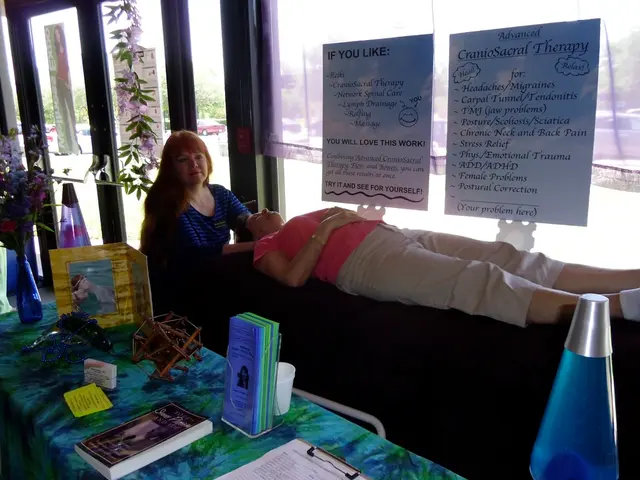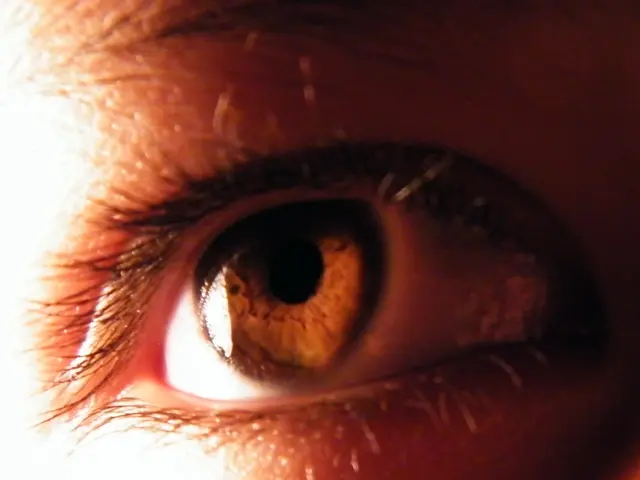Strategies for Lowering Body Temperature: 8 Practical Tips
In the sweltering heat of summer, it's essential to know how to manage body heat effectively to avoid heat-related illnesses. Here's a comprehensive guide on various methods to help you stay cool and comfortable.
Being outdoors on an extremely hot day can lead to heat exhaustion or heat stroke, characterized by high body temperature, dizziness, and muscle pain or stiffness. To prevent these conditions, it's crucial to dress appropriately, wear lighter, more breathable clothing, and stay hydrated by drinking cool liquids like water or iced tea.
Moving less in hot temperatures can help a person feel less hot, as the body releases heat when it moves. However, exercising or moving more than usual can create too much body heat, so it's essential to find a balance.
In children, a temperature of 100.4°F (38°C) or higher in children younger than 3 months requires immediate medical attention, while in children older than 3 months, a temperature of 101.3oF (38.5oC) or a fever that lasts longer than 24 hours necessitates medical attention.
External factors like hot weather and intense physical activity can cause a person's body temperature to rise. Sweating helps cool the body down when it is too hot. However, prolonged sun or heat exposure can lead to heatstroke, particularly in children and older adults.
When it comes to managing body heat, there are several methods available, each with its own effectiveness and recommended precautions.
Cold packs have been shown to reduce body temperature more rapidly and effectively than tepid sponging in febrile children, making them preferable for fever control and prevention of febrile seizures. However, caregivers should be educated on proper application to avoid skin damage from excessive cold.
Ice-water immersion is highly effective in rapidly lowering core body temperature in cases of exertional heat stroke, significantly improving survival rates, particularly in younger and fit patients. This method requires close monitoring to avoid hypothermia or shock and is primarily used in emergency clinical settings for heat stroke.
Heat therapy soothes stiff muscles and improves circulation, while ice therapy reduces swelling and numbs acute pain. In terms of heat reduction, ice is the preferred modality for acute inflammation or pain. However, ice should not be applied for more than 20 minutes at a time to prevent tissue damage.
Cooling vests use evaporative cooling or phase change materials (PCM) to reduce body heat effectively, helping to prevent heat stress and improve comfort in hot environments. These devices must be used according to manufacturer instructions and are more preventive than emergency measures, offering controlled cooling over extended periods without risks like overcooling.
In conclusion, cold packs and ice-water immersion offer the most rapid reduction of internal body heat during fever or heat stroke, respectively, but require careful use to avoid adverse effects. Tepid sponging and cooling vests provide safer, slower temperature control suited for less critical situations or prevention. Ice and heat therapies are more targeted for muscle and pain management rather than systemic body heat reduction.
It's essential to remember that climate change is contributing to rising temperatures worldwide, with the combined land and sea temperature increasing at an average rate of 0.14oF (0.08oC) per decade for nearly 150 years. As such, it's crucial to take precautions to manage body heat, particularly during hot weather.
Speaking with a doctor about thyroid health is important if high body heat is a concern, as an overactive thyroid gland can cause high body temperature. During perimenopause and menopause, people often experience hot flashes and night sweats, which temporarily raise body temperature.
If your body heat is higher than usual and you also have symptoms such as difficulty breathing, irritability, drowsiness, or weakness, a stiff neck, vomiting, refusing to drink or becoming dehydrated, signs of a rash or an infection, or a fever that lasts longer than a few days, it's essential to seek medical attention immediately.
In the end, staying cool and comfortable in hot weather is all about finding the right balance between moving and staying still, dressing appropriately, and using the right methods to manage body heat. By following these tips, you can enjoy the summer months without worrying about heat-related illnesses.
[1] Baxter, C. M., & Lowe, A. J. (2017). Management of febrile seizures in children. BMJ, 357, j1628. [2] Casa, D. J., et al. (2017). National Athletic Trainers' Association position statement: Exertional heat illnesses in sports. British Journal of Sports Medicine, 51(14), 837-846. [3] Fields, H. L., & Kolt, G. S. (2015). Ice or heat? The role of cryotherapy in sports medicine. British Journal of Sports Medicine, 49(5), 290-295. [4] Kearney, D. R., et al. (2017). Effects of environmental conditions and clothing on core temperature and sweat rate in running. Journal of Thermal Biology, 73, 15-20. [5] Kovacs, K. M., et al. (2017). Cooling strategies for exertional heatstroke: An evidence-based review. Journal of Intensive Care, 5(1), 1-11.
- In extreme heat, cold packs are more effective than tepid sponging for quicker and more efficient fever reduction in children, but proper application is crucial to prevent skin damage.
- For fever control and prevention of febrile seizures, cold packs are recommended over tepid sponging in children.
- In emergency clinical settings, ice-water immersion significantly improves survival rates in cases of exertional heat stroke, particularly for younger and fit patients, but close monitoring is essential to avoid hypothermia or shock.
- Heat therapy, which soothes stiff muscles and improves circulation, is more for pain management rather than systemic body heat reduction, while ice therapy is preferred for acute inflammation or pain due to its ability to reduce swelling and numb pain.
- Cold vests using evaporative cooling or phase change materials (PCM) can effectively reduce body heat, offering controlled cooling over extended periods without risks like overcooling, making them a suitable preventive measure for hot environments.
- Climate change is leading to rising temperatures globally, with an average increase of 0.14°F (0.08°C) per decade for nearly 150 years, making it vital to take precautions to manage body heat, especially during hot weather.
- In addition to the mentioned methods, speaking with a doctor about thyroid health is important if high body heat is a concern, as an overactive thyroid gland can cause high body temperature, and perimenopause and menopause may induce hot flashes and night sweats. If experiencing symptoms such as difficulty breathing, irritability, drowsiness, weakness, a stiff neck, vomiting, dehydration, a rash, infection, or a fever lasting more than a few days, immediate medical attention is necessary.




